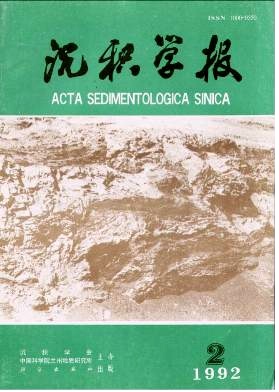Migrational Geochromatograph of Natural Gas and Discussion on the Mechanism and Indices
- Received Date: 1991-04-08
- Publish Date: 1992-06-10
Abstract: During the process of petroleum migration, it would develop compositional fractionation by mutual effect of stationary-mobile phase, called "Geochromatograph" In this paper, samples of natural gas and condensate oil have been collected from two typical gas fields in Sichuan Basin-Weiyuan and Zhongba Gas Fields, which are different in age of source beds, reservior strata、precursor and maturity.Results of GC and GC-MS analysis reveal a regular compositional variation of the hydrocarbons within the well- locality sections, which is different from that caused by either gravitational fractionation or diffusive homogenization, suggesting the geochromatographic effusive. Along the direction from wing to top of anticlinal gas traps, parameters such as C1 / (C2+C3) 、 iC4/ nC4、 CH4% 、 N2、 △R1 and △R3 show increasing trend, while iC4/ C3 and CH4/ N2 show decreasing tendency; among condensate oil parameters, cyclohexane/ normalheptane、 ethylcyclohexane / (D+P) dimethylbenzene、 Pr/Ph、 ACL1 and ACI2 increase, while ABI1 and ABI2 show decreasing trend. During the percolative migration process, besides the molecular weight、 molecular volumn and so on, polarity difference is the dominant factor for controlling the relative migration velocity of different composition. Polarity different derives from both variances of molecular length and molecular structure, but structure factor plays a much more important role than the former. Among parameters illustrating the geochromatography, △R3 and ABI1 are the best ones with two remarkable features in common: 1. highest resolution in responding to the fractionation, 2. mono-explanatory for migration. While ABI1 value has been least influenced by the evaperative depletion of condensate oil samples during the transportation, showing its stable geochemical property.
| Citation: | Wu Zhiyong, Luo Binjie. Migrational Geochromatograph of Natural Gas and Discussion on the Mechanism and Indices[J]. Acta Sedimentologica Sinica, 1992, 10(2): 119-125. |






 DownLoad:
DownLoad: